The luxury of time is a valuable asset when visiting the vast collections, exhibits and shops at the Metropolitan Museum. The phrase also refers to a small yet marvelous current exhibition at the museum featuring pieces from its distinguished collection of European timepieces. Time is of course inescapable, and while the need for clocks and watches has diminished in our increasingly technological world, our fascination with the art of timekeeping continues. Just check out the prices for vintage chronographs. Melding the science of mechanization with aesthetic artistry, these exquisite objects created a beautiful dialogue between inside and out.
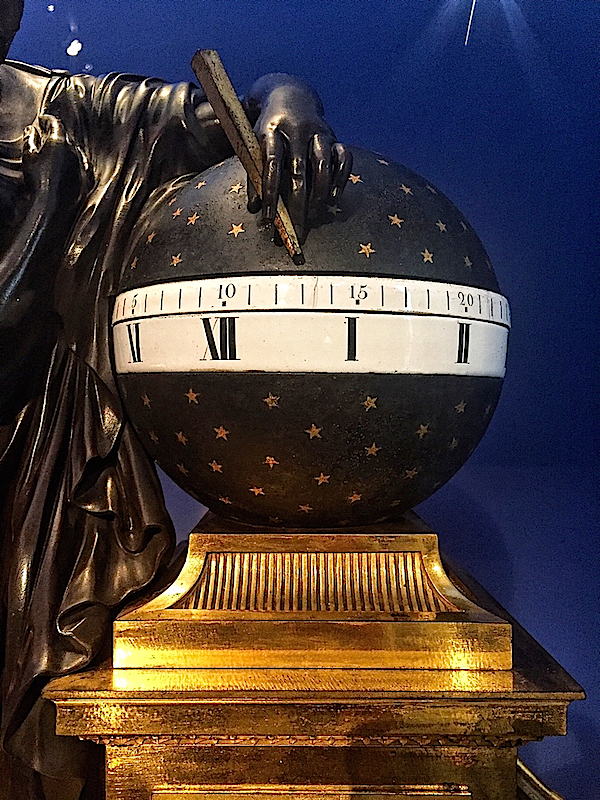
French decorative arts of the 18th century are prized for their sophisticated elegance and classic designs and the clocks of that era are some of the most luxurious ever made. Collaborations between clockmakers, gilders, cabinetmakers and other artists resulted in creations such as the mantel clock above (detail) and below from circa 1768. Renowned sculptors such as Houdon probably made models for the figures.
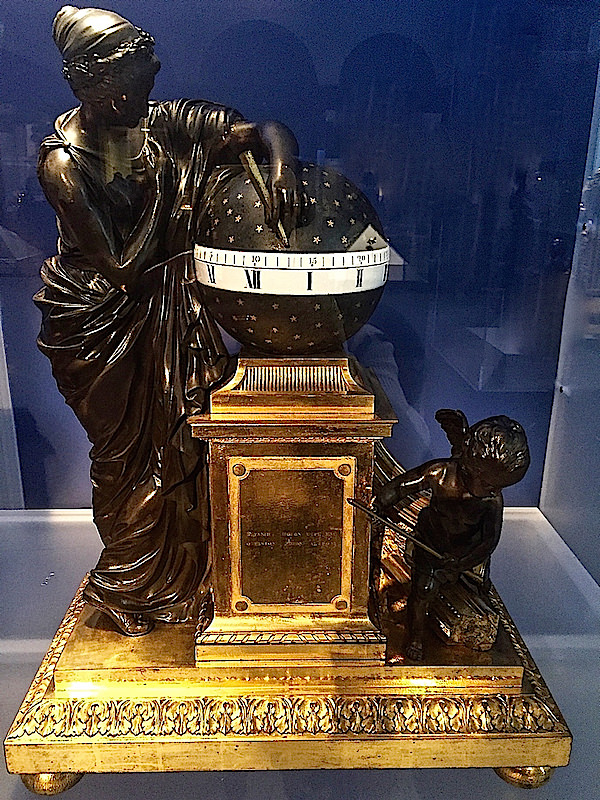
One of the signature clocks in the show is actually a marine chronometer, below. Of oak veneered with ebony and brass, it was made by Ferdinand Berthoud in 1768-70, the appointed clockmaker to both the king and navy. It contains complex interior workings only matched by the highly decorative ornamental case.
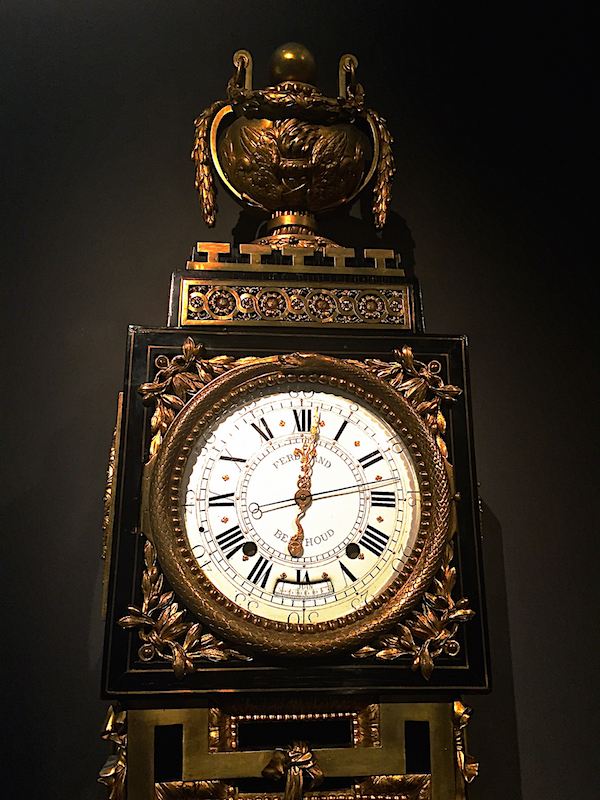 As the Met synopsis so aptly explains, “Clocks and watches have always been about more than just telling time: they have been treasured as objects of desire and wonder, personal items imbued with value that goes beyond pure functionality. As works of art, they represent the marriage of innovation and craftsmanship.” Nothing represents this synthesis more than the amazing automatons in the show. Augsburg, Germany was famous for its intricate examples, prized by princes and others who could afford such whimsical luxuries, such as this clock from circa 1610.
As the Met synopsis so aptly explains, “Clocks and watches have always been about more than just telling time: they have been treasured as objects of desire and wonder, personal items imbued with value that goes beyond pure functionality. As works of art, they represent the marriage of innovation and craftsmanship.” Nothing represents this synthesis more than the amazing automatons in the show. Augsburg, Germany was famous for its intricate examples, prized by princes and others who could afford such whimsical luxuries, such as this clock from circa 1610.
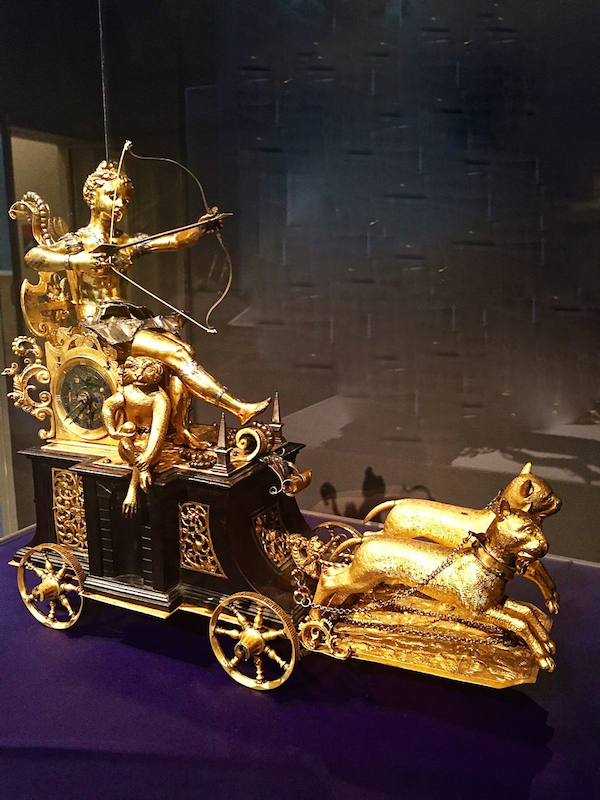
It is incredible to think of what was involved making these pieces, intricate in both function and decoration, in an era with no electric light or tools. When wound, this magnificent gilded representation of Diana and her chariot, moves forward with various movements such as Diana rolling her eyes, shooting her arrow as the final gesture – all the while keeping accurate time. If you visit the exhibit, there is a fun video showing the clock in motion.
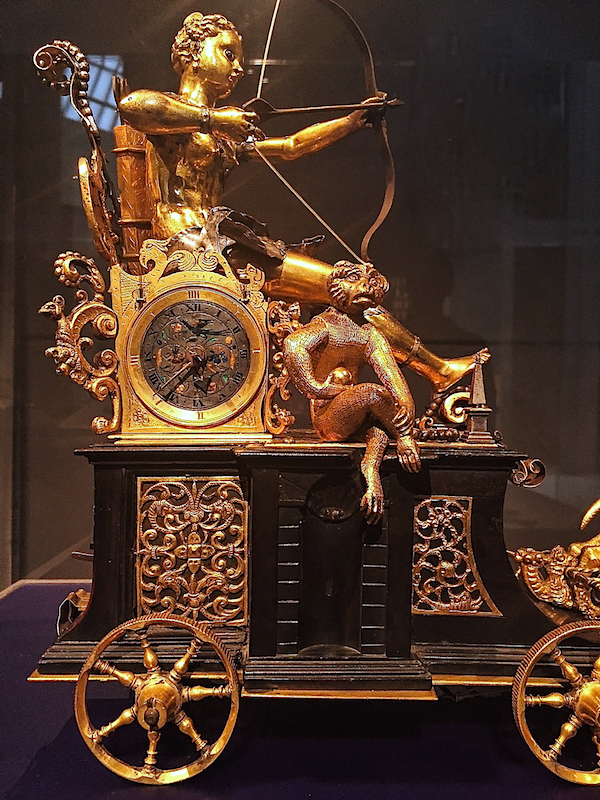
Another example of an Augsburg automaton is this clock with crowned eagle, the emblem of the Habsburgs. When the clock strikes the hour, the scepter moves and on the quarter hours the eagle opens and shuts his beak and rolls his eyes – clearly a very opinionated bird. If interested in automatons, visit a post I wrote about a special collection here.
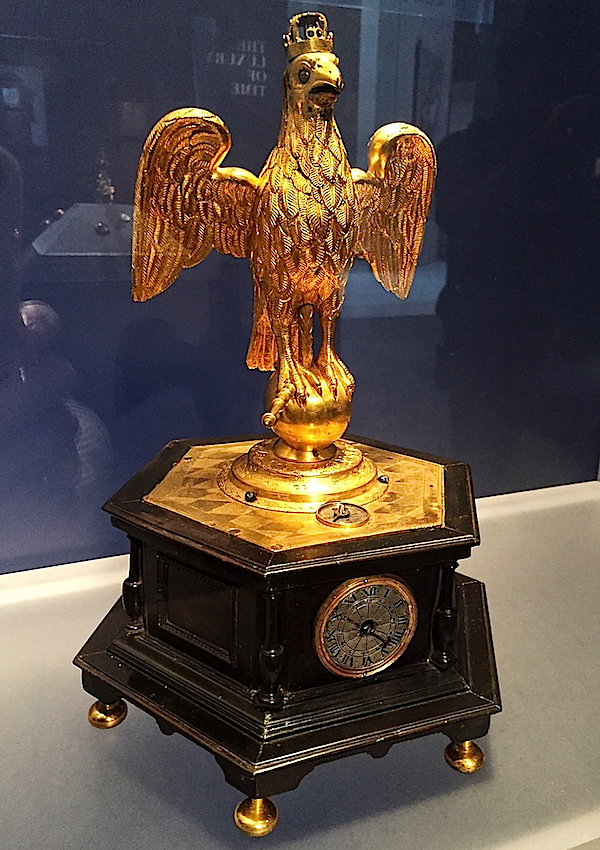
This large mantel clock, weighing in at almost 400 pounds, was clearly destined for an enormous location as it is over three feet tall and 41 inches wide. Its dramatic setting in the exhibit accentuates its theme of Triumph of Love over Time.
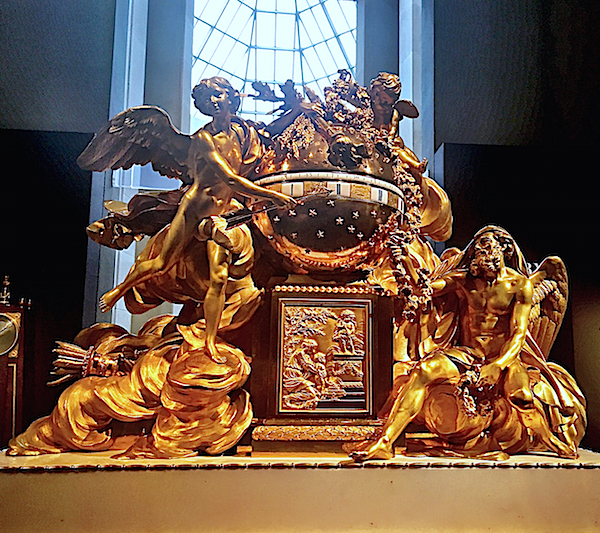 Encased in a copper sphere, the clock consists of two revolving horizontal dials. The winged god of Love at the left, who has triumphed over Father Time on the right, joyously points at the time with his arrow.
Encased in a copper sphere, the clock consists of two revolving horizontal dials. The winged god of Love at the left, who has triumphed over Father Time on the right, joyously points at the time with his arrow.
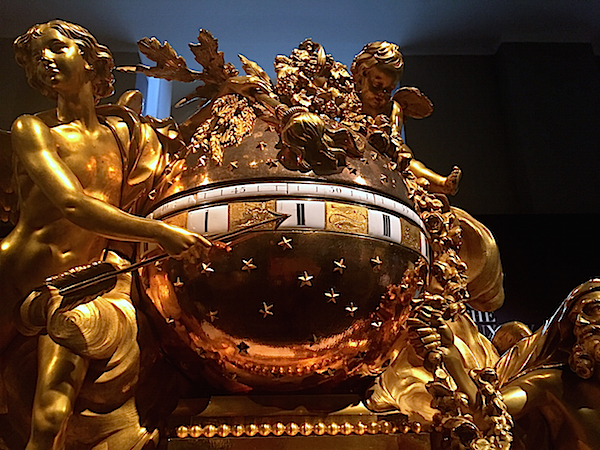 There are, in addition, many examples of jeweled and enameled watches and clocks, representing the “central place of timekeepers in the history of decorative arts.”
There are, in addition, many examples of jeweled and enameled watches and clocks, representing the “central place of timekeepers in the history of decorative arts.”
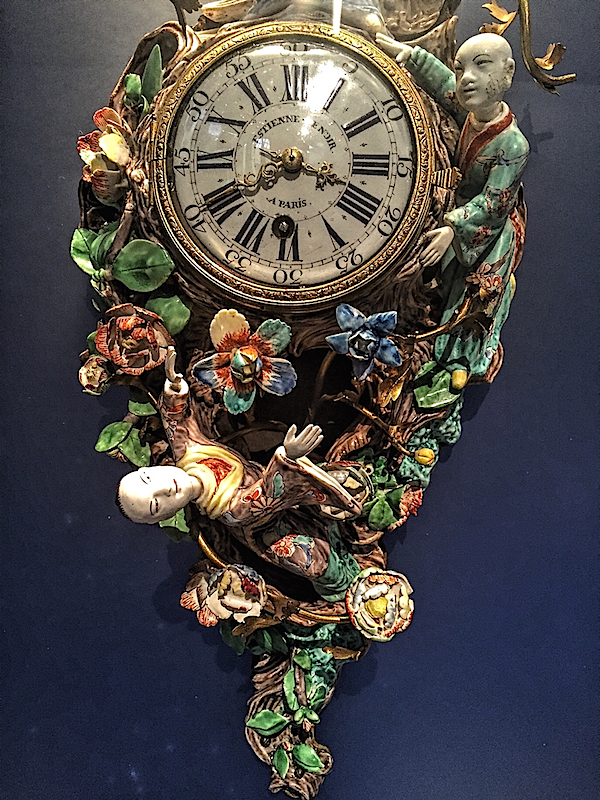
After the exhibit, I highly recommend a visit to the latest shopping addition at the museum. While you may be familiar with the main gift shop, the new Paper Project in the back left of the main hall is a must see. The Met Store was founded in 1910 selling paper reproductions of the collection and now the new shop is a “contemporary celebration of the material that started it all.” With over 500 paper products, it is full of fabulous finds for the design minded – papier maché masks, fun tags
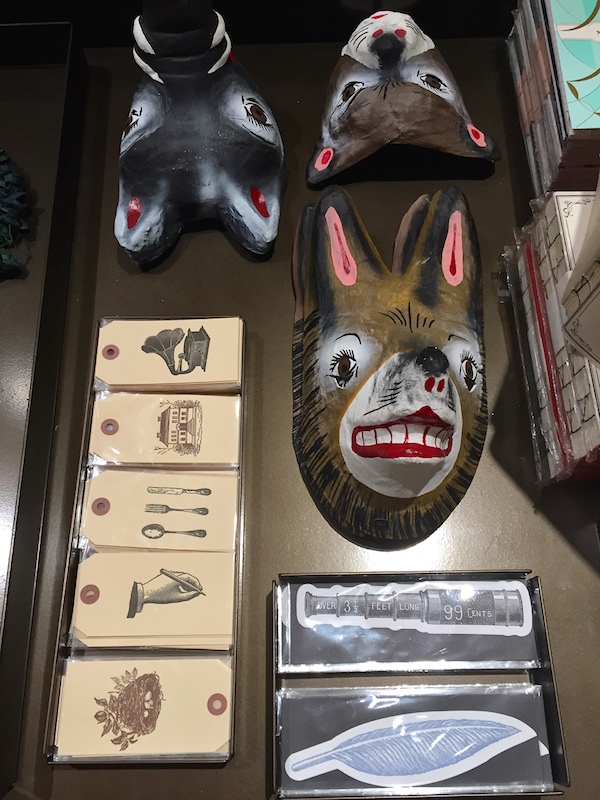
for all ages and interests.
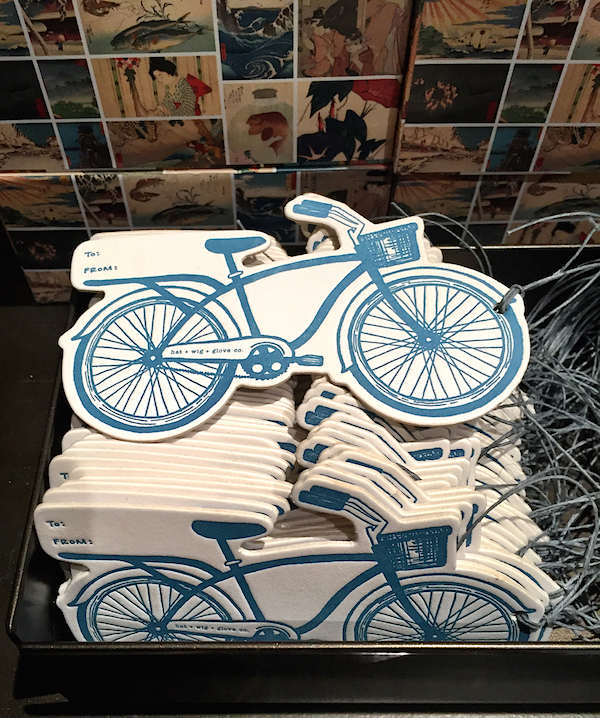
There are festive fans for when the warmer weather resumes,
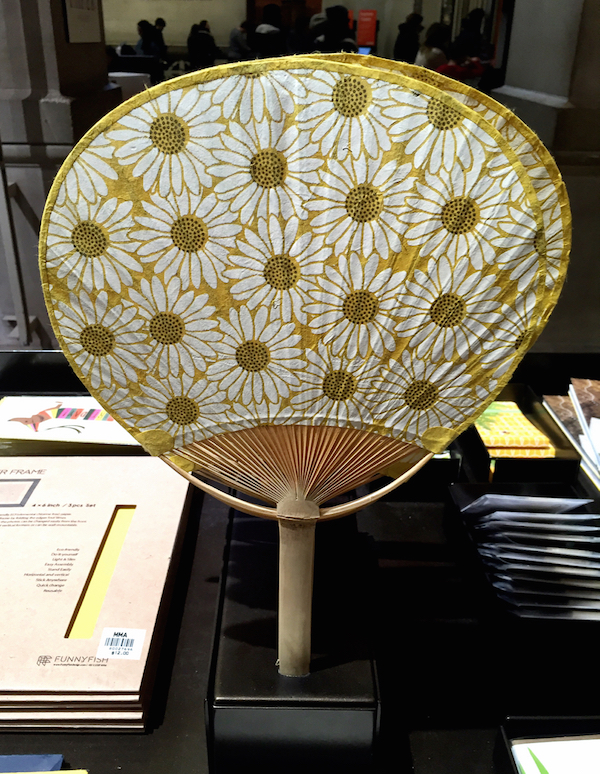
a fabulous Fresian 3D horse of recycled cardboard to build
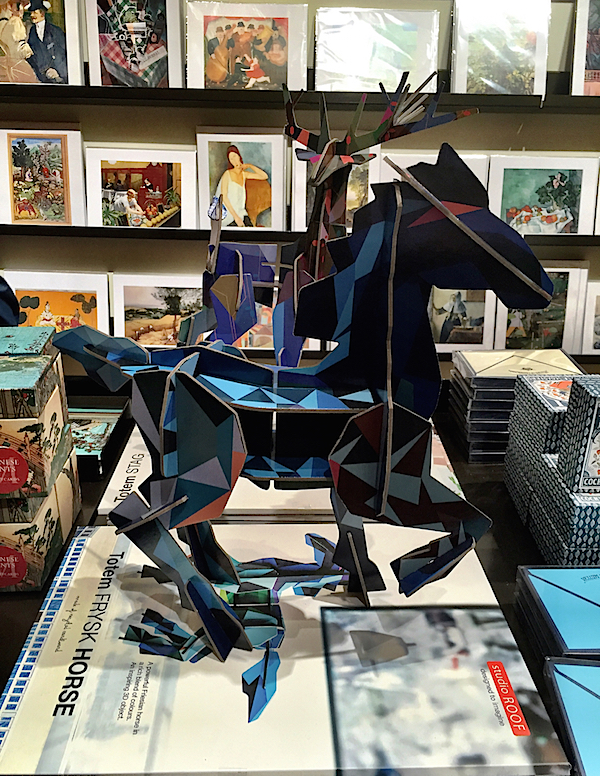
distinctive books and cards,
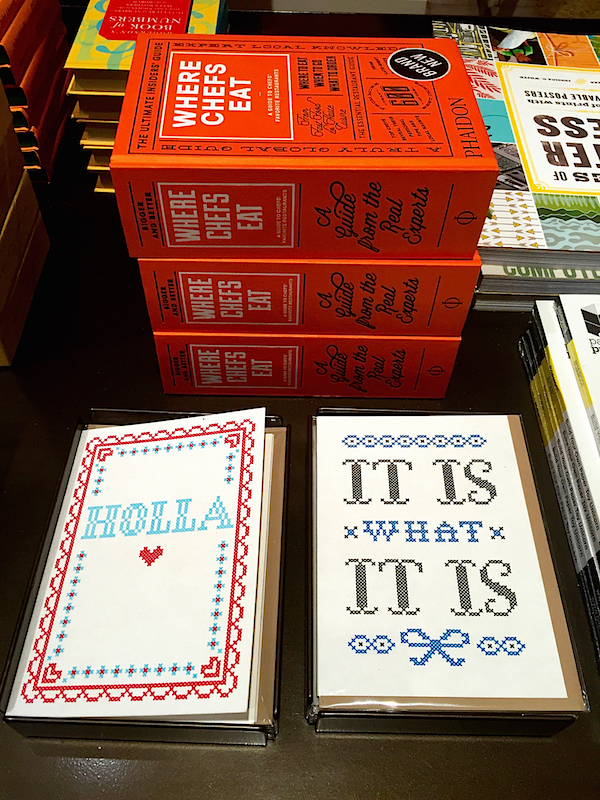 a fun display of alphabetized notepads
a fun display of alphabetized notepads
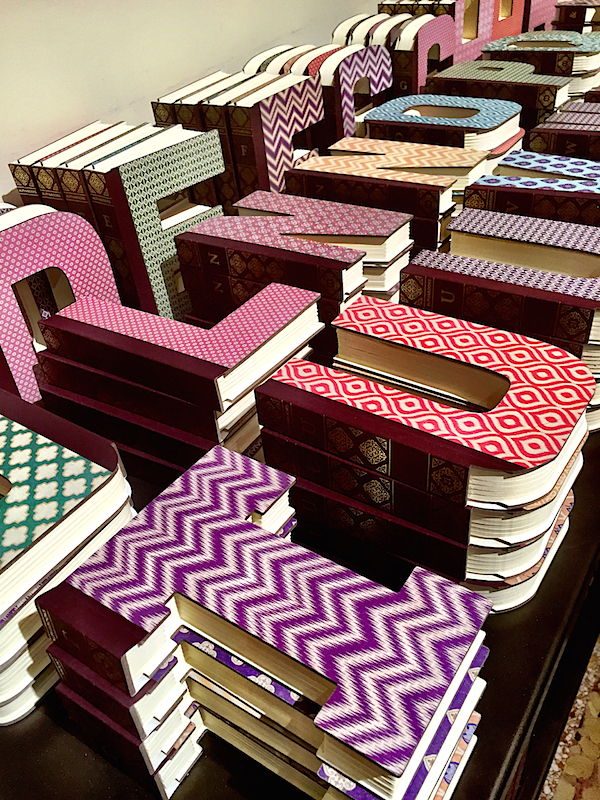
clever journals for the literary minded, postcards
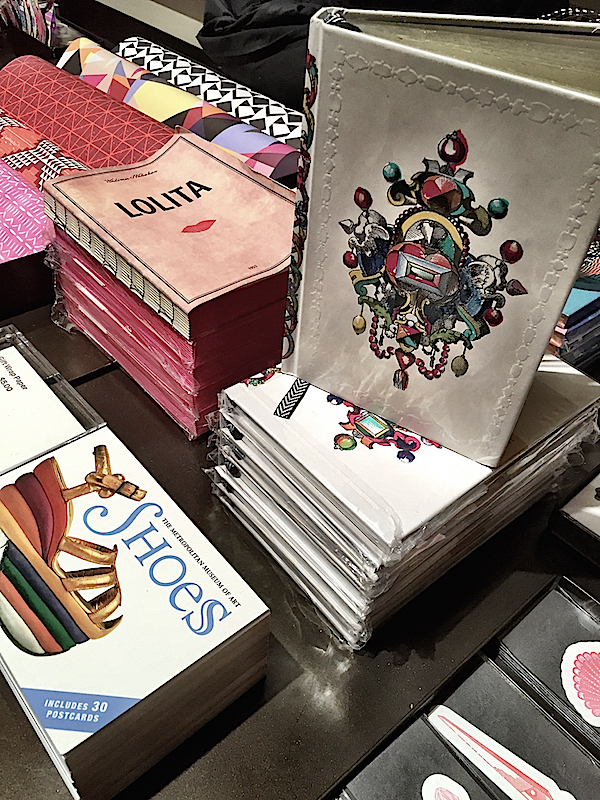
and even jewelry.
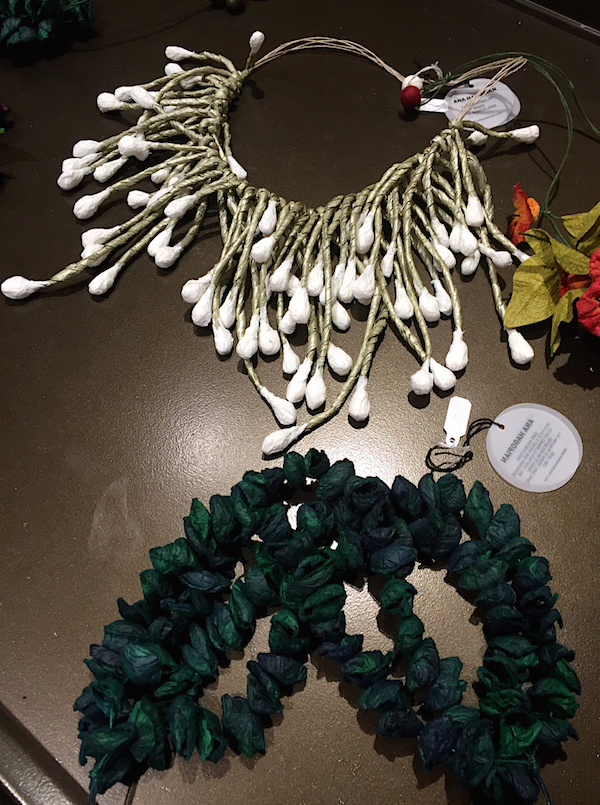
And because you won’t be able to resist buying a gift, there is also a selection of beautiful artisanal wrapping paper.
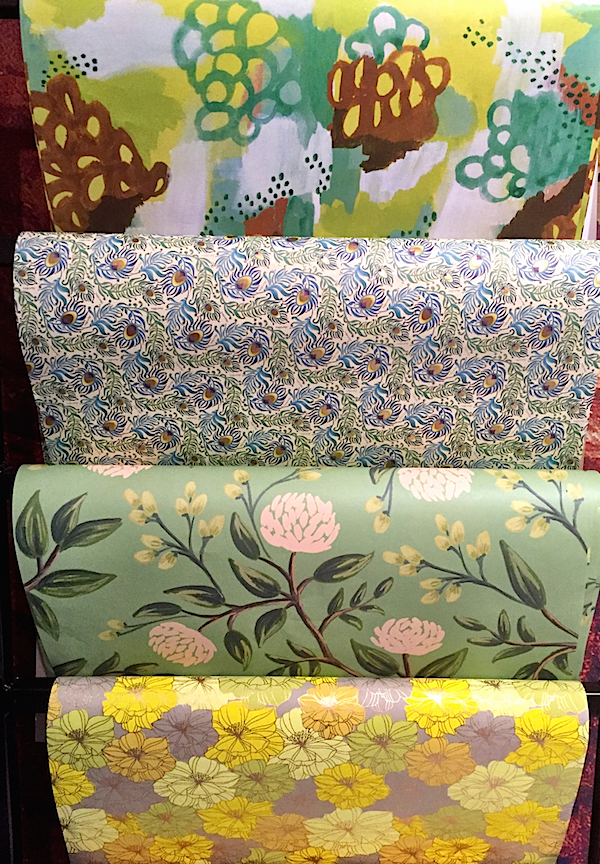
While the luxury of time is a gift, it is a necessity when visiting the many wonderful exhibits at the Met and its enticing Paper Project.



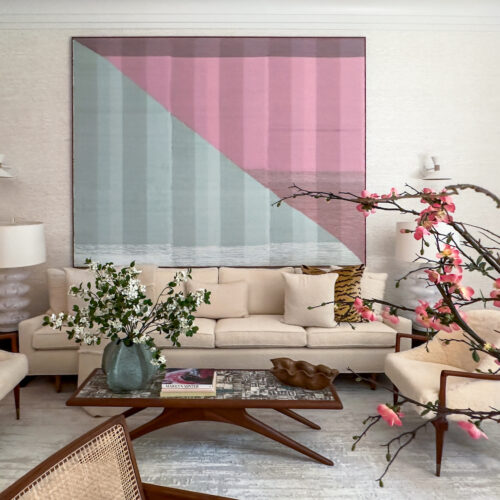

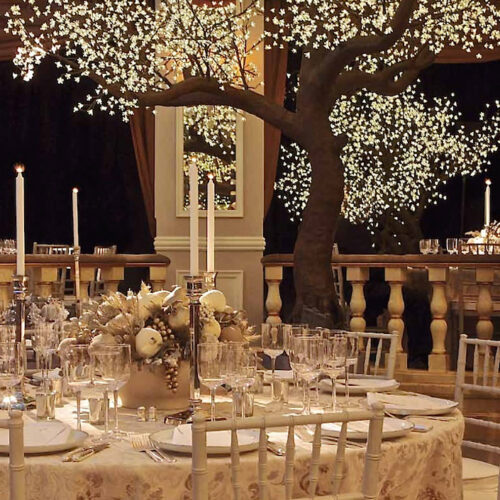

A design shopper paradise! I just purchased “marbleized” wrapping paper from the Smithsonian Museum shop that I lined the inside of two lampshades…oh, the possibilities… franki
Thank you! I feel as if I’ve been shopping after touring the museum…..two favorite things. Lovely! More, please.